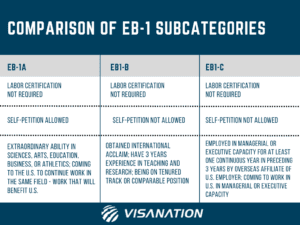The Security Metric that Highlights the Illegality and Dangers of Biden’s CBP One Port-Entry Scheme
Recently, I explained that the National Defense Authorization Act for Fiscal Year 2017 (NDAA 2017) included a provision (section 1092) captioned “Border Security Metrics” that focuses on CBP’s ability to protect the nation from external threats (codified at 6 U.S.C. §223). Section 1092(c)(1), which requires the DHS secretary to “develop metrics, informed by situational awareness, to measure the effectiveness of security at ports of entry”, reveals why the administration’s policy of funneling illegal aliens through the Southwest border ports of entry is not only illegal, but a threat to national security as well.
Alien “Applicants for Admission” at the Border and the Ports. Section 235(a)(1) of the Immigration and Nationality Act (INA) defines all aliens who attempt to enter the United States — both legal and illegal entrants, and both at the ports of entry and at the borders between the ports — as “applicants for admission”.
Section 235(a)(3) mandates that applicants for admission be “inspected by immigration officers” to determine whether they’re inadmissible under any of the grounds of inadmissibility in section 212(a) of the INA.
Those “immigration officers” can be either Border Patrol agents apprehending illegal entrants between the ports, or CBP officers (CBPO) within the agency’s Office of Field Operations (OFO) inspecting aliens at the ports. Regardless of whether they are in Border Patrol or OFO, however, their job is exactly the same — to keep inadmissible aliens out of the United States.
Under section 212(a)(7)(A)(i) of the INA, aliens are inadmissible if they are:
not in possession of a valid unexpired immigrant visa, reentry permit, border crossing identification card, or other valid entry document … and a valid unexpired passport, or other suitable travel document, or document of identity and nationality if such document is required under the regulations issued by [DHS under section 211 of the INA].
If, following that inspection mandated by Congress in section 235(a)(3) of the INA, an “immigration officer” — Border Patrol agent or CBPO — determines that an “applicant for admission” is inadmissible under section 212(a)(7)(A)(i) of the INA, that officer has a choice as to how to proceed.
Under section 235(b)(1)(A)(i) of the INA, that officer may “order the alien removed from the United States without further hearing or review” without obtaining a removal order from an immigration judge “unless the alien indicates either an intention to apply for asylum … or a fear of persecution”.
If the alien subject to expedited removal “indicates an intention to apply for asylum” or claims a fear of persecution, the agent or CBPO must refer the alien to a USCIS asylum officer for an interview to determine whether the alien has a “credible fear of persecution”.
Congress, in section 235(b)(1) of the INA, is clear, however, that aliens “shall be detained pending a final determination of credible fear of persecution and, if found not to have such a fear, until removed”, and is equally clear that if an asylum officer “determines at the time of the interview that an alien has a credible fear of persecution … the alien shall be detained for further consideration of the application for asylum”. (Emphasis added.)
The other choice that the “immigration officer” — again, Border Patrol agent or CBPO officer at the port — has in the case of an “applicant for admission” who is inadmissible under section 212(a)(7)(A)(i) of the INA is to place that alien directly into removal proceedings before an immigration judge, under section 235(b)(2) of the INA.
Again, however, Congress has made clear in section 235(b)(2) of the INA that an “applicant for admission” who the “examining immigration officer” — at the ports or between them — “determines … is not clearly and beyond a doubt entitled to be admitted … shall be detained for” that removal proceeding. (Emphasis added.)
To reiterate — in case it was not clear already — the whole purpose of the section 235 inspection process is to determine whether the alien applicant for admission should be admitted to this country, or not.
“The CBP One App Interview Scheme”. Which brings me to CBP’s “May 2023 Monthly Operational Update” which was published on June 20. It explains that the Biden administration is expanding on a plan, first announced in a January 5 White House “Fact Sheet”, allowing would-be migrants to schedule interviews at Southwest border ports of entry “to initiate a protection claim” in lieu of crossing the border between the ports illegally.
For simplicity’s sake, I refer to that policy as the “CBP One App interview scheme”, and here’s how it works: All foreign nationals (either Mexican or “other than Mexican”) are able to download and access the CBP One mobile app, which (helpfully) “serves as a single portal to a variety of CBP services”.
Using the app from central or northern Mexico, those aliens can then schedule an “appointment” to present themselves for inspection under section 235 of the INA (or, as the CBP update describes it, “to be processed under Title 8” — Title 8 of the U.S. Code being the INA) at a Southwest border port.
When this scheme was first introduced, appointments were for a time certain, like 10:45 AM on March 30. Apparently, migrants had difficulty complying with that schedule, however, so CBP now allows them to show up instead at any point during a 23-hour timeframe, according to the update.
It’s not the only recent expansion to the scheme. By May, 1,000 CBP One port appointment slots were available daily, but on June 1, the agency expanded that to 1,250 daily appointment slots — all, as noted, during a 23-hour timeframe — so more migrants inadmissible under the INA can now show up at the ports whenever they feel like it on a given day, up to 38,750 per month.
What’s Happening at the Ports? By definition, none of the migrants taking advantage of the CBP One app interview scheme are admissible; if they were, they could just show up at the port, present their documents, and go through the section 235(b) inspection process just as they have ever since it was initiated in the 19th century. So, what happens to them?
Good question, because the entire process is shrouded in official secrecy (or “darkness”, a place where the Washington Post assures us “democracy dies”). Fortunately, some tiny rays of disinfecting sunlight have peeped through the cracks.
For example, CBP’s “Custody and Transfer Statistics FY2023” reveals that CBPOs at the ports issued more than 30,000 Notices to Appear (NTAs) — the documents used to place aliens into removal proceedings — in May. That’s a 32 percent increase in NTAs at the ports compared to April (fewer than 23,000), and more tellingly, a 160 percent increase compared to May 2022, before the scheme was implemented.
As noted, however, section 235(b) of the INA bars DHS from releasing inadmissible applicants for admission at the ports of entry. So, are aliens using the CBP One app being transferred to ICE, the agency responsible for detaining inadmissible aliens pending removal proceedings?
Probably not, because ICE’s detention statistics show that it booked in fewer than 23,000 aliens who were referred by CBP last month, and that figure would include not only inadmissible aliens at the ports but also illegal migrants apprehended by Border Patrol (nearly 140,000 of whom in May were processed for removal under the INA).
All of that appears to verify reports that more than 99 percent of all inadmissible aliens processed under the CBP One app interview scheme are being allowed into the country. But how could the Biden administration be releasing migrants it is required by law to detain? Good question.
CBPOs at OFO do have very narrow authority to release a limited number of inadmissible aliens at the ports of entry on “parole”. In fact, as I have explained elsewhere, parole is the only authority CBPOs at the ports possess that allows them to release an inadmissible alien into the United States.
CBP could disclose how many aliens OFO paroles at the ports each month (it publishes a monthly Border Patrol parole figure), but it doesn’t. That said, given that recent court orders have dropped the hammer on the administration’s parole abuses, parole is likely not DHS Secretary Alejandro Mayorkas’ first option.
Rather, it appears that the administration is issuing CBP One app migrants NTAs and ushering them out the door under DHS’s general arrest and release authority under section 236(a) of the INA. But, as I explained on May 30, that provision doesn’t allow port releases because it only grants DHS power to release aliens it has arrested on a warrant, and alien applicants for admission at the ports aren’t “arrested”, let alone on a “warrant”.
NDAA 2017. One critic of that analysis complained that I was conflating what I thought was wrong with what I deemed “illegal”. I’ve been applying and — in places — writing the INA for 32 years, however, and stand by my legal analysis. But for additional support I turn to section 1092(c)(1) of NDAA 2017.
It establishes metrics Congress has deemed critical in assessing whether, and to what degree, DHS is securing the border at the ports of entry.
Three of those metrics (subparagraphs B, C, and E) deal with OFO’s ability to find and seize illegal drugs, one (subparagraph G) with cargo interdictions, and another (subparagraph D) with “infractions related to travelers and cargo committed by major violators” (smugglers and fraudulent applicants for admission).
The first set of metrics, subparagraph A, focuses exclusively on inadmissible applicants for admission, requiring the DHS secretary to report, on an annual basis, his:
Estimates … of the following: (i) Total inadmissible travelers who attempt to, or successfully, enter the United States at a port of entry. (ii) The rate of refusals and interdictions for travelers who attempt to, or successfully, enter the United States at a port of entry. (iii) The number of unlawful entries at a port of entry.
As its name suggests, the “National Defense Authorization Act” is a law aimed at defending our nation against all threats to its security. The inclusion of the metrics in section 1092(c)(1)(A) therein is thus about as clear a statement as you can find that Congress is concerned about threats posed by inadmissible alien applicants for admission who are nonetheless able to enter the United States.
It is also about the clearest congressional determination you can expect that inadmissible alien applicants for admission should not — by law — be allowed to enter the country.
And it does so in the most straightforward way possible. Those metrics concentrate exclusively on “inadmissible travelers” who attempt and are allowed to enter — not be admitted to — the United States. Thus, they include not only aliens who gained admission via fraud, but all inadmissible alien who were stopped at the ports of entry and allowed to enter the United States, anyway.
All of which the Biden administration, through its CBP One app interview scheme, throws out the window.
Even in its recent opinion in U.S. v. Texas, in which the Supreme Court held that states lack standing to challenge the administration’s blatantly illegal refusal to apprehend, detain, and remove alien criminals (including murderers, rapists, and child sex offenders), the Supreme Court stopped short of finding that states can’t sue to stop the president from releasing aliens already in DHS custody.
That includes every inadmissible alien at every port of entry, as well as all illegal entrants apprehended by Border Patrol agents. Such suits are pending in Texas and North Dakota, and the courts may want to take a look at section 1029(c) of NDAA 2017.
The White House is scamming the American people by claiming that inadmissible aliens who schedule interview appointments at the ports are “seeking to enter the United States lawfully”. They’re not, and NDAA 2017 wouldn’t consider their subsequent entries a national security metric if they were. What’s worse than the administration’s lies, however, are the security risks they are exposing to country to.





